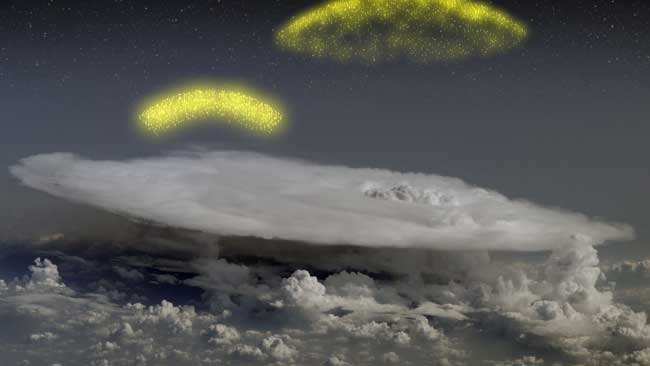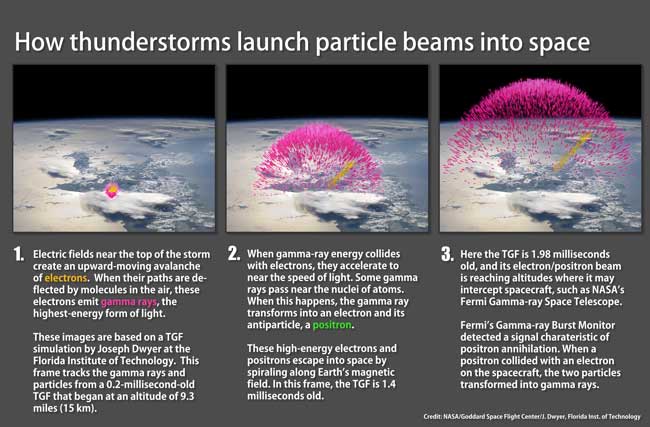It’s Raining Antimatter… Upward?
Thunder… lightning…gamma rays! Terrestrial gamma-ray flashes (TGFs) are brief bursts of gamma rays produced inside thunderstorms and associated with lightning. NASA's Fermi Gamma-ray Space Telescope detected beams of antimatter produced above thunderstorms, evidence that thunderstorms may make antimatter particle beams.
Scientists believe TGFs come from strong electric fields at the tops of thunderstorms where the field becomes strong enough that it pushes electrons upwards, where the electrons reach speeds almost as fast as light. These electrons give off gamma rays when they're diverted by air molecules and then are detected as a TGF.
The electrons produce so many gamma rays that they shoot electrons and positrons out of the atmosphere and NASA’s Fermi Gamma-ray Space Telescope intercepts these particles, showing evidence that thunderstorms may be producing antimatter.

An artist’s rendering of electrons moving toward the edge of the earth’s atmosphere, being produced above thunderstorms. Image courtesy of NASA.

This pdf illustrates how thunderstorms launch particle beams into space. Credit: NASA's Goddard Space Flight Center/J. Dwyer, Florida Inst. of Technology
For more information:
http://www.wired.com/wiredscience/2011/01/lightning-antimatter-physics/
http://science.nasa.gov/science-news/science-at-nasa/2011/11jan_antimatter/











